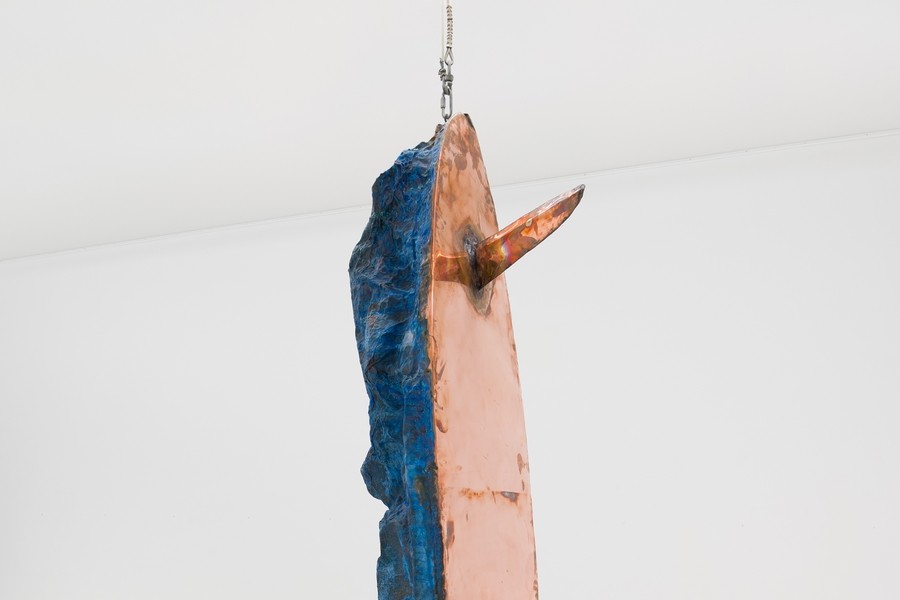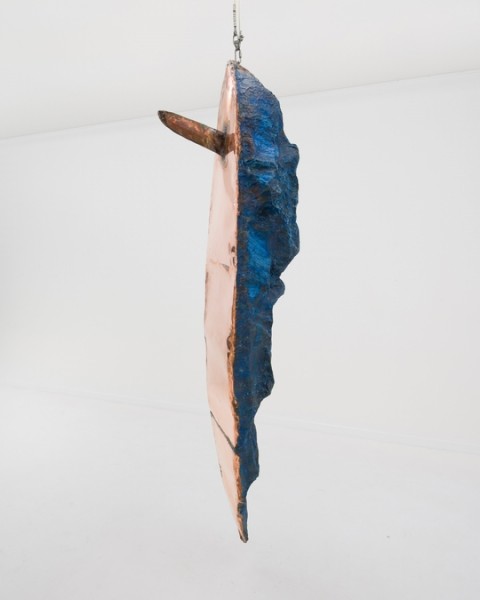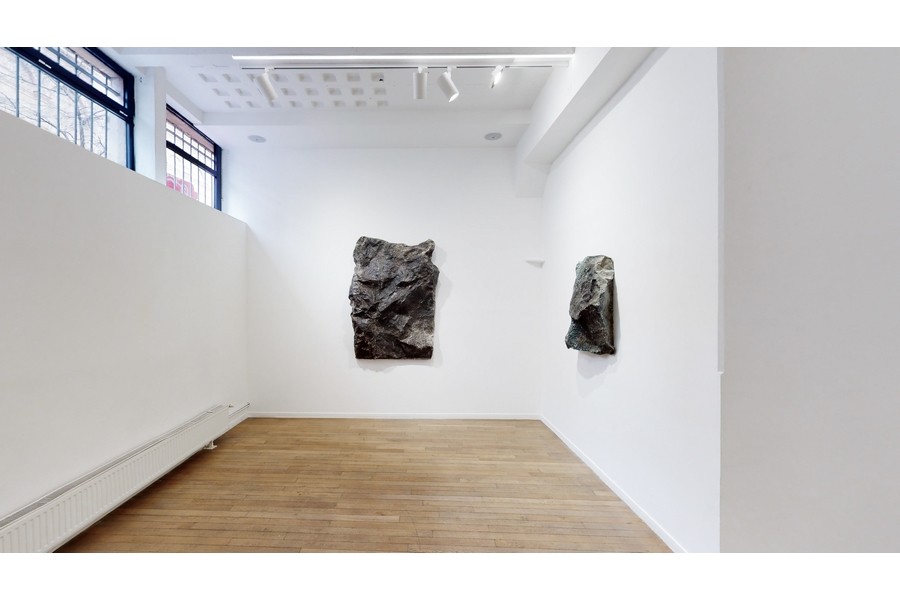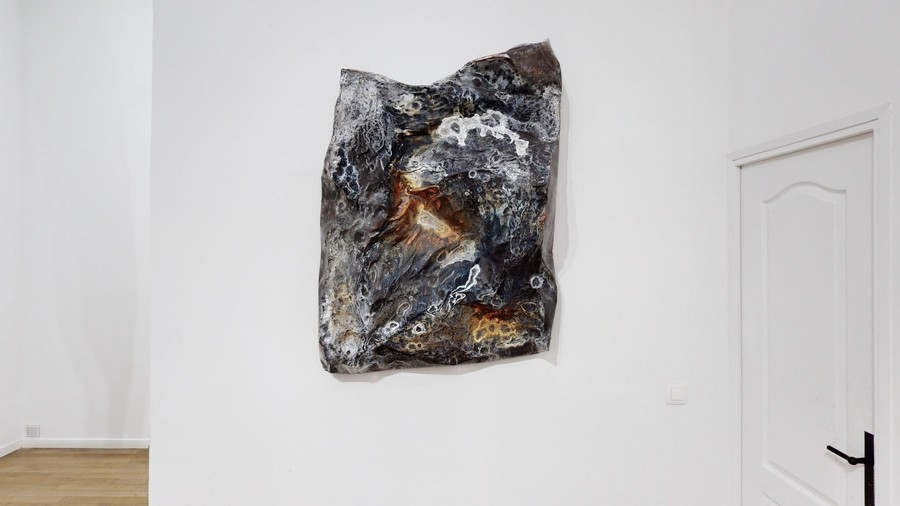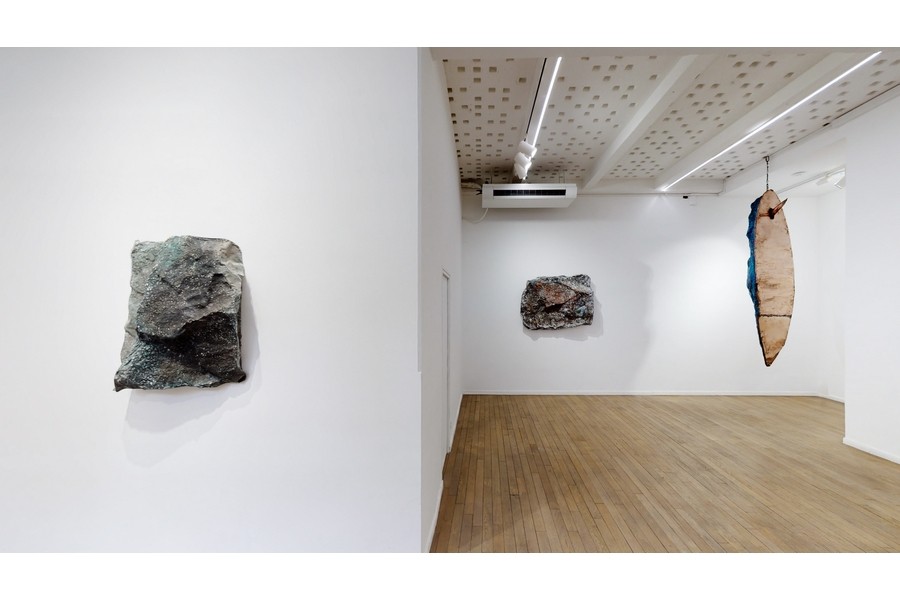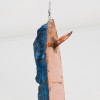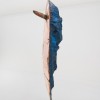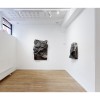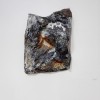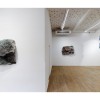Having to discover a surfboard has “fins” by Googling “surfboard elements” is perhaps hard to defend and though it sure as hell speaks volumes about the authority of this text, I believe there’s mitigation in the fact the title piece of Marius Ritiu’s new show Go with the flood – a ceiling-hung copper sculpture of what looks like a blue rock back to back with, so I’ve learned, a full-on surfboard – appears to have a rusted blade sticking out (Google’s as gracious in verifying blood will cause a knife “to rust in record time”).
That copper doesn’t rust but corrodes is also true and a detail I’ll leave here. And, admittedly, a stab in one or the other personal vendetta – even fatal – still feels rather softcore compared to the explicit anxiety addressed in the work: the distress of “keeping calm and carrying on” while swimming and sinking might soon be one and the same. “Soon” is a notion high among today’s expiring luxuries. “Soon” as in: the unappreciated silence seconds before the alarm goes off. Luxury’s joker is you get to forget how special something is, a wild card we can’t afford to have (except, it seems, if you can afford it, bcc: the pollution rights market). “Avant-garde” translates to “ahead of the wave”.
Surrounding the sinking surfboard is a series of voluminous wall works that the artist traced from rocks hammer-in-hand. Meteorites have very literally entered Ritiu’s practice and they’ve done so in large scale. These new works seem to walk a humbler path (you can look at them without them “getting in your way”), and in their meeting with the wall they walk a path yet unexplored. Ritiu’s interest for these pieces went not just to the terror of water but also to its texture, and the way the texture of a mountain peak might in a certain light register as a water source. A versatility owed to, what the artist calls, “fractals”.
This exhibition was prepared in an “outdoor studio” on a hilltop (if the water level levels up, soon our last resort), a meaningful background, part of the package deal of the Arteventura residency in Andalusia, Spain. The residency is advertised for artists keen to get “back to basics” and reconnect with nature, which was never Ritiu’s struggle. Being surrounded by hills instead of high buildings, however, does dim the inevitable hypocrisy of making “land art” with a strong message (“I don’t want to name names,” the artist tells me on the phone “But you hear them talk and then you see all that polyester.”) There’s something moving, if not a little conservative, about Ritiu articulating his wake-up calls through construction and not destruction (a pendulum that swings between impactless soup stains on painting’s tourist highlights, and statement suicides, cc: Paul Schrader’s First Reformed). The work itself might say our fate is signed, let alone sealed, but creation itself reveals a rationale (strange enough) that is antagonistic to more doomed drives.
Go with the flood mimics the rhetorics of climate change discourse, which is all about “nonsolutions”, the glitch of guilt tripping the individual (note Ritiu made a surfboard, not a ship) about cheap air travel and plastic straws. Like politics, Ritiu’s work puts apocalypse in the spotlight, but it would be as fair to say the impending apocalypse puts Ritiu’s work on the spot. As nature might just wipe it all out in a second, give it that closer look while you can, something like that? Eschatology makes for notoriously good PR.
